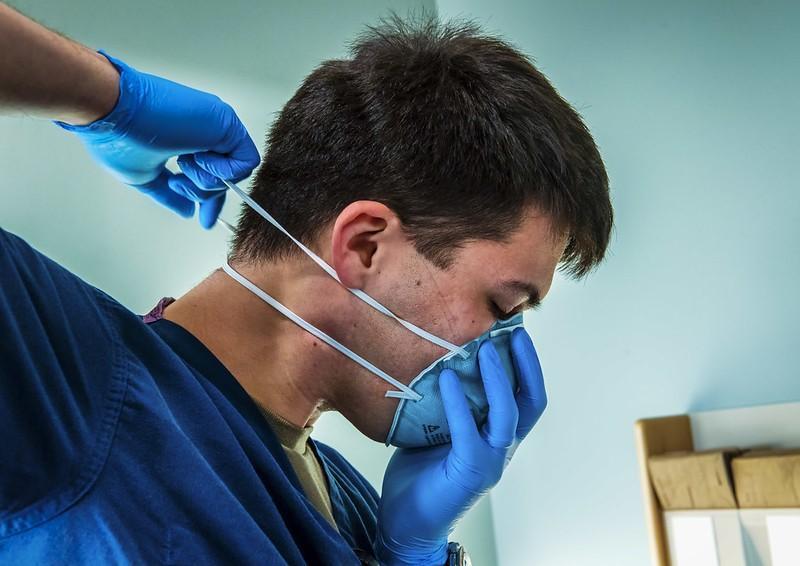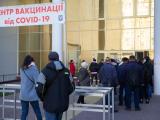Well into the COVID-19 pandemic, the World Health Organization (WHO) and US Centers for Disease Control and Prevention (CDC) were reluctant to use terms like "airborne," "airborne transmission," and "aerosol transmission" to describe the spread of the virus through the air, while other experts used various definitions to describe the phenomenon, sowing confusion about how the disease was circulating.
An international group has been grappling with the issue, and today the experts laid out their deliberations in a report and proposed new agreed-on terminology for pathogens that transmit "through the air," which include not only SARS-CoV-2, but also influenza, measles, MERS-CoV (Middle East respiratory syndrome coronavirus), SARS (severe acute respiratory syndrome), and tuberculosis.
The group included the WHO, consulting experts, and representatives from four major health groups: the Africa Centres for Disease Control and Prevention, the Chinese Center for Disease Control and Prevention, the European Centre for Disease Prevention and Control, and the US CDC.
In the press release, the WHO said the terminology challenge stemmed from a lack of common terminology across several scientific disciplines, a problem that became more acute when experts across disciplines were tapped to weigh in with guidance and recommendations.
Jeremy Farrar, MD, the WHO's chief scientist, said, "We are pleased to have been able to address this complex and timely issue and reach a consensus." He added that agreed-on terminology for pathogens that spread through the air will help pave the way for new research agendas and to implement public health interventions designed to identify, communicate, and respond to current and new pathogens.
Umbrella term and 2 transmission descriptors
Along with the through-the-air terminology, the group introduced other common descriptors.
People infected with respiratory pathogens can generate and expel infectious particles while breathing, talking, singing, or coughing, for example. The group agreed that those particles should be called "infectious respiratory particles" (IRPs). Since IRPs have different sizes, the group steered away from defined cutoff points such as "droplets" and "aerosols" that scientists have used to distinguish larger particles from smaller particles.
The experts also proposed two descriptors to characterize transmission through the air, with "airborne transmission or inhalation" used when IRPs are expelled into the air and inhaled by another person no matter what the distance and "direct deposition" for when IRPs are directly deposited on the mouth, nose, or eyes of another person.
Steps for moving forward
Yuguo Li, PhD, who co-chaired the technical working group and a building environment expert in the department of mechanical engineering at the University of Hong Kong, said reaching consensus was unprecedented and wasn't easy. "Completing this consultation gives us a new opportunity and starting point to move forward with a better understanding and agreed principles for diseases that transmit through the air."
The WHO said the terminology discussions and agreement represent the first phase of discussions on the topic. I added that the next steps include more technical and multidisciplinary research and exploring the wider implications of using the updated terms.
Sticking points and practical implications
In the 52-page report, the group acknowledged some sticking points and concerns about practical implications regarding use of the new terms. They stopped short of recommending full airborne precautions to mitigate the risk of short-range airborne transmission.
And while discussions were based on the best available science, the group agreed on the importance of balancing scientific insights with availability, access, affordability, and other practical realities to minimize health inequity and avoid potential consequences, such as the ability to access personal protective equipment such as respirators.
Some experts not involved in the report have said the WHO is on the right path and are welcoming the terminology clarifications. Others, however, see a mixed picture and hope the groups are sincere when they say the report is a first step.
Joe Vipond, MD, an emergency department physician in Calgary, Alberta, and clinical assistant professor at the University of Calgary, said on X today that the report finally acknowledges that short-range airborne transmission is an integral part of all airborne transmission and explicitly says COVID is airborne. He is the cofounder of a Masks4Canada, a grassroots group with a goal of the Canadian government and public knowing about the critical role of masks for reducing COVID transmission.
"This is huge," he wrote, noting that the acknowledgement means workers, especially in healthcare, need respirators when caring for patients in concerning situations. (Respirators fit snugly to the face and filter out the smallest IRPs, as opposed to medical masks, which leave gaps.)
Vipond, however, noted several shortcomings, such as no mention of air filtration or sterilization in the list of suggested public health and social measure implementations. And though he praised the group for having airborne scientists on board, he said key disciplines should also include engineers and occupational hygienists. "We need all brains engaged on wicked problems."
In his other comments, he raised concerns about a lack of consensus on the use of the precautionary principle, which he said was also a problem during the SARS outbreak, and questioned the group's rationale that issues regarding equity preclude recommendations for respirator use. "Equity means everyone gets excellent protections. Not reducing protections to the lowest possible common denominator."





















